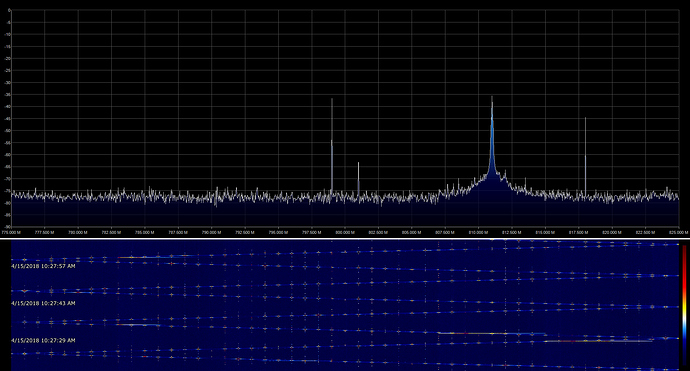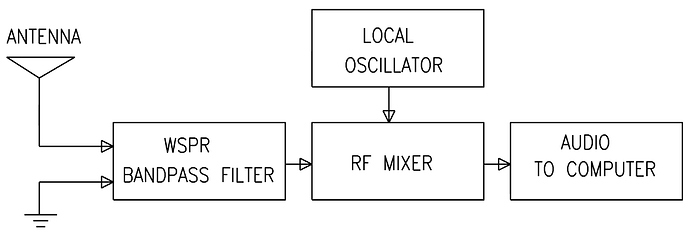Thank you everyone. Do not hesitate to report installation issues. Next version is on the way, with very interesting features.
Meanwhile, moRFeus learned to speak CW (morse code) today !
Screenshot : https://imgur.com/d4eKntA
Audio : https://vocaroo.com/i/s0s0MVJayuU2
Guess message ! ![]()
I would love to see your script for it. It makes for a good station ID on a test signal.
–Konrad, WA4OSH
Great stuff 
I’m almost done with the windows python implementation using hidapi
Mine is a little more terminal like


Regards
Ohan
Hi !
Great ! CW beacon , noise generator, on the way ![]() I have not so much knowledge in python, but I can confirm informations provided by @Abhishek are precious and tested. using USB HID
I have not so much knowledge in python, but I can confirm informations provided by @Abhishek are precious and tested. using USB HID
Perhaps you could consider implementing a GUI at first shot, it’s more convivial. I’m sure you can find lot of modules. The most important is to have every brick working, skeleton later ! That’s my opinion.
I will work on python-GUI, after proving it’s possible using only bash ![]()
If this can help, you and @Konrad_Roeder , I implemented the CW in few minutes, inspired by this script : https://www.cl.cam.ac.uk/projects/raspberrypi/tutorials/robot/resources/morse_code.py
I just replaced the LED by a moRFeus device (power 0/5)
Regards.
Hi
Yes you are correct, a GUI is needed. I was leaving the gui implementation for last, since it would just call my already defined objects with there params.
I also only started to learn python yesterday, it’s thankfully very easy to pick up.
I can also confirm that the protocol described here is 100% working… It does in windows have an extra null byte at the start of the msg array. I based my whole python program on pure hidapi calls with bytearray manipulation and it currently does everything that the morfeus tool does with a sweep function.
It also returns “moRFeus v1.6” when I read from the registers on first boot via HID read method after sending the readRegister byte array.
Will keep you posted, well done implementing that tool in bash 

It also returns “moRFeus v1.6” when I read from the registers
“moRFeus v1.6” is the message returned when issuing a wrong or unrecognized command.
- perhaps you don’t send the correct command code for readRegister (not documented at this moment), or related data (only 1 bit as data needed I think).
Preview : GQRX users here ? moRFeus also learned to talk to GQRX last night. Still bash. Release scheduled for tomorrow.
EDIT GQRX users, I updated moRFeus_GUI on github.
moRFeus is now able to sync with GQRX VFO and LNB LO. Perhaps working with other SDR programs, don’t know. See README.md for more details. Please report issues, thanks. Enjoy. ![]()
amazing  just one step from WSPR modulation ain’t?
just one step from WSPR modulation ain’t?  Seriously it’s on the edge for WSPR, it use 4-FSK with 1.46 Hz spacing, morfeus has 1.5 Hz step size in lower band. Will look into specs more if possible or not.
Seriously it’s on the edge for WSPR, it use 4-FSK with 1.46 Hz spacing, morfeus has 1.5 Hz step size in lower band. Will look into specs more if possible or not.
Here is the basic block diagram of a WSPR receiver:
What is the receive frequency range? moRFeus is a bit limited below 80 MHz.
The demodulation is done at baseband, so the LO step size has little to do with it.
–Konrad, WA4OSH
I thought transmitter not receiver
Hi
Please find my Windows Qt app for controlling moRFeus.
Written in Python using the raw HID protocol.
I am in the process of testing it on linux.
It opens the device once and closes it when the application is exited.

It does not open if the device isn’t connected.
Please test it out and report any bugs.
Regards
Ohan
Hi again

Got it working on Linux and added install and usage steps.
[EDIT]
There is also now a standalone windows exe that can just be extracted and executed.
Pew pew
Zoltan,
I don’t quite understand where you are going with using moRFeus for producing the HF signal for WSPR. moRFeus does not go that low.
–Konrad, WA4OSH
For $80 I can get a little wspr transmitter using the silcon labs si 5351 synthesizer see qrp labs.
I really don’t see a need to complete in wspr field. pretty small group of users.
https://www.silabs.com/documents/public/data-sheets/Si5351-B.pdf
who talks about HF? ![]() WSPR bands are not just on HF but much above:
WSPR bands are not just on HF but much above:
Frequencies
USB dial (MHz): 0.136, 0.4742, 1.8366, 3.5926, 5.2872, 7.0386, 10.1387, 14.0956, 18.1046, 21.0946, 24.9246, 28.1246, 50.293, 70.091, 144.489, 432.300, 1296.500
QRP Labs makes excellent kits, nice design!
That’s what’s left with moRFeus limitations.
Do you think we could make near accidental contact with moonbounce?
–Konrad, WA4OSH
talked with the FW designer he suggest 2m and 70cm can work, above the step size might not fine enough.
haha ![]() maybe EME works too
maybe EME works too
FT8 also an interesting modulation, a bit more useful for real contacts like WSPR (later is really just M2M communication to characterize the propagation)
developers: “Steven Franke, K9AN, and Joe Taylor, K1JT”
True. You would probably also need to lock the VCO to a GPS source.
I went to the MicroHams conference and heard a talk by Joe Taylor that might interest you.
MicroHAMS Digital Conference - 2018
Work The World With WSJT-X Start at 4:38:00
–Konrad, WA4OSH
Hi
I’ve added the morse code to my cmd prototype:
I will add it to the GUI as a menu item next ![]() and update to repository accordingly.
and update to repository accordingly.
The current blue skying of the morfeus device is pretty awesome!
Have a nice weekend folks.
Ohan
ZS1SCI
Hi Ohan
Thank you for all, looks really promising. 
Day after day we can see new ideas rising on the forum, to develop new applications to moRFeus , and it’s very good !




